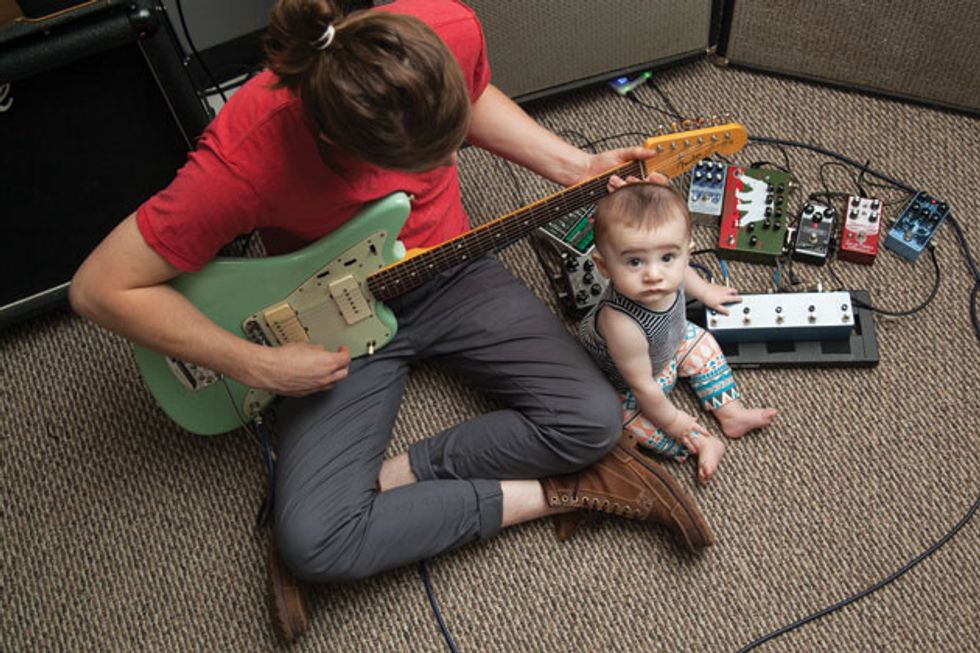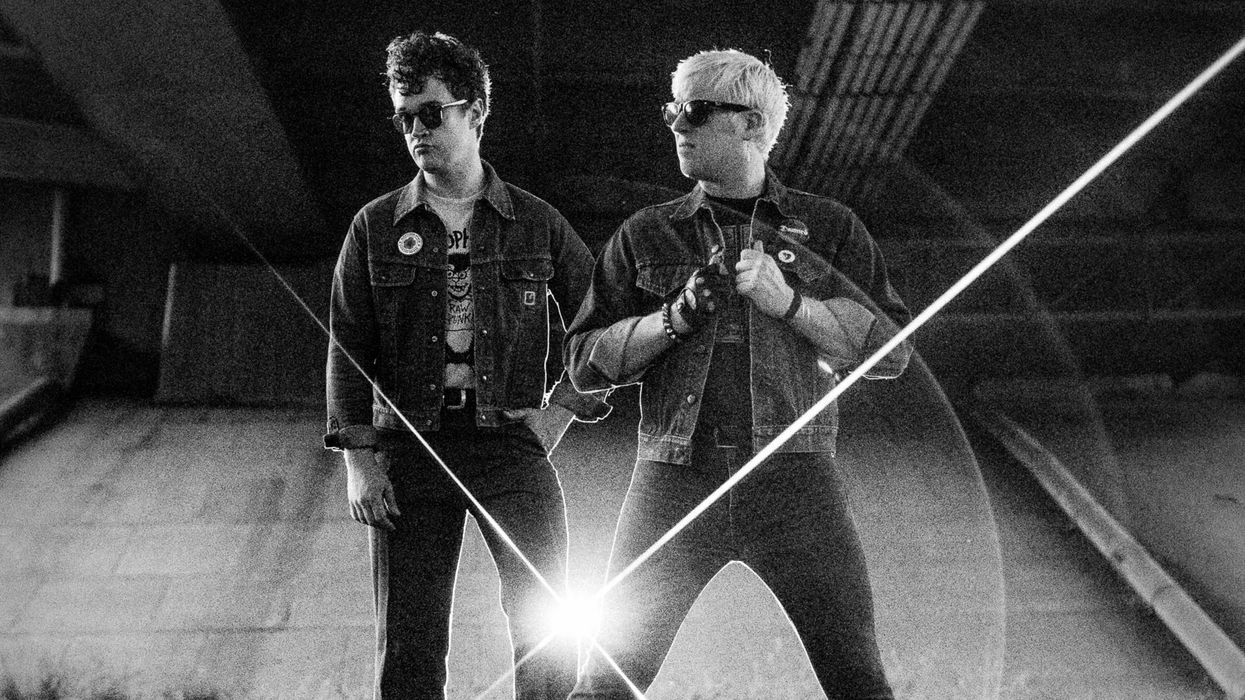Here is what I know. After three weeks on the road, somewhere over the Atlantic Ocean, I’m tired. Setting up and tearing down, loading in and loading out, staying up until morning night after night. Walking around foreign countries, looking for that morning brekkie or good coffee spot in strange towns, trying not to miss anything. There’s a cost to doing as much as possible and having so many choices: energy, a currency I find to be in shorter supply with each passing birthday.
So where am I going with this? How do curmudgeonly thoughts on aging and exhaustion tie into a column about guitar pedals?
Do more by doing less. Easy. Loopers, man. Loopers. The most unglamorous of guitar pedals. Superior practicality and no shine, no gold, no sparkle.
Why would I want to waste energy and focus on turning things on and off if I really just want to play music and enjoy that moment? Watching someone struggle to turn a simple device on and off over and over again sounds like painful performance art. But loopers make it easy.
Several different devices claim the name “looper.” Here I refer not to digital recorders that let you layer parts, but “true bypass loopers” or “switchers” that create alternate pathways for your signal (usually the shortest and most unaffected between your guitar and amp) while providing remote on/off pedal switching. They also permit effect loops—a group of two or more pedals that can be activated by a single on/off switch.
The overpopulated pedalboard. As my pedal collection has grown over the years, so has my pedalboard. At times there was no justification for its size and weight—I had it, so I was going to use it! Nothing went to waste. I was going to work that phase shifter and ring mod into a song somewhere. As the board grew, its spacing and arrangement got weirder and more challenging. My ability to turn a pedal on and off became less important than having an additional two or three effects. By the time I discovered loopers, I was in dire need of one, yet I resisted for a long time. Maybe because they have no allure to make me a louder or weirder player. They’re about pure practicality within an impractical profession.
I started with the basic single-channel looper, commonly used to switch multiple pedals on and off via a single switch, or to reduce potential signal variation when using older or buffered-style pedals. Simple and easy.
More channels, more possibilities. Then I moved on to three-, four-, and five-channel switchers. Made sense—I could put all my drive pedals in the upper-right corner of the board in any arrangement and control them from the linear switch layout at the front of my pedalboard.
I then tried an additional five switcher, plus a two switcher for my remaining pedals. Every on/off switch lived at the front of my board in a neat row, while the actual pedals reigned in chaos, scattered every which way, patch cables and power tangled in a fight to stay plugged in. But even if a pedal came unplugged, everything else still worked. The show went on.
Most of what I’d used up to that point I made myself—there’s a strong DIY market for true-bypass loopers, with plenty of options to fit your channel and space needs.
But then. Oh, but then!
Dreams come true: nonlinear loopers. Then I discovered the world of nonlinear, buffered or unbuffered, pre- or post-gain, stereo-out loopers, and the options became endless. Companies such as the U.K.’s GigRig and Denmark’s Carl Martin are making dreams come true. Their switchers allow you to change combinations and orders of effects, assigning each channel a different number of effects. Say you’ve got your overdrive pedal in loop 1. You can assign it to channel 1 solo. And then assign it to channel 2 along with whatever else is in that loop (another drive, maybe). Then assign it to channel 3 along with whatever’s there. And everything is selectable from one stomp, one on/off switch.
GigRig has expanded possibilities even further by adding post- and pre-gain options to each channel. For example, you can use a single drive pedal for loops 1 through 5, but vary the amount of pre and post gain on each channel, effectively creating five different drive channels from one pedal. That’s what sold me. So simple. So smart.
This isn’t an endorsement of any particular company or product—just the idea that smarter is better than harder. You can refine your pedal system to banish mid-set tap dancing, letting you concentrate on your performance. True, these loopers add weight to your board, but I find the tradeoff to be worth it. And now maybe I can hold onto some of that precious energy, looking for the next thing to complain about.











![Rig Rundown: Russian Circles’ Mike Sullivan [2025]](https://www.premierguitar.com/media-library/youtube.jpg?id=62303631&width=1245&height=700&quality=70&coordinates=0%2C0%2C0%2C0)















